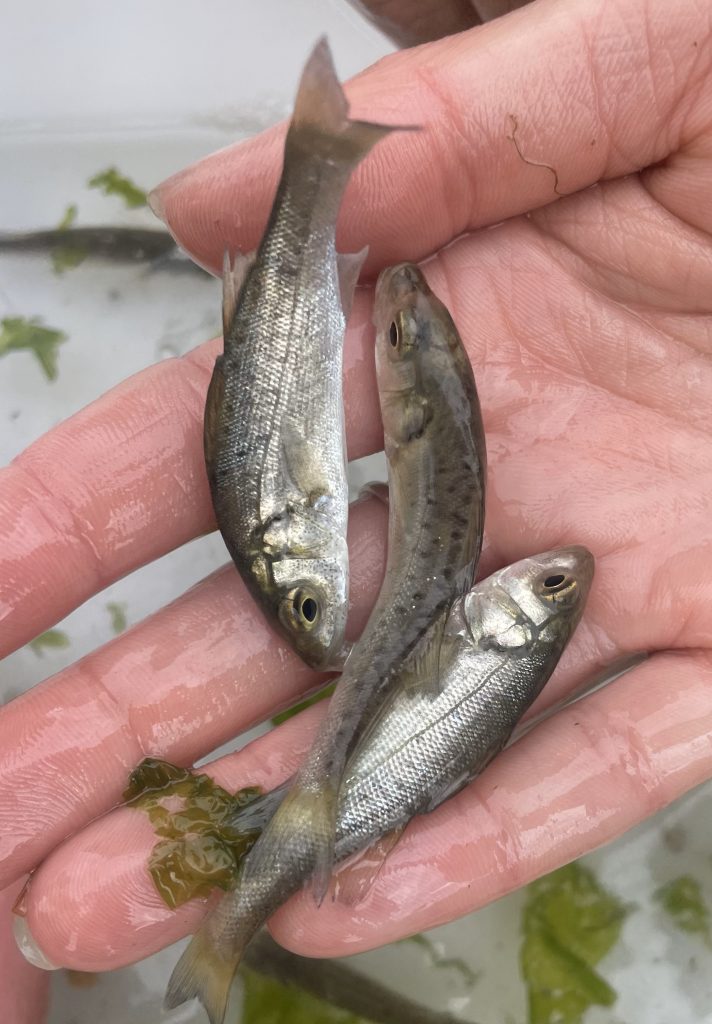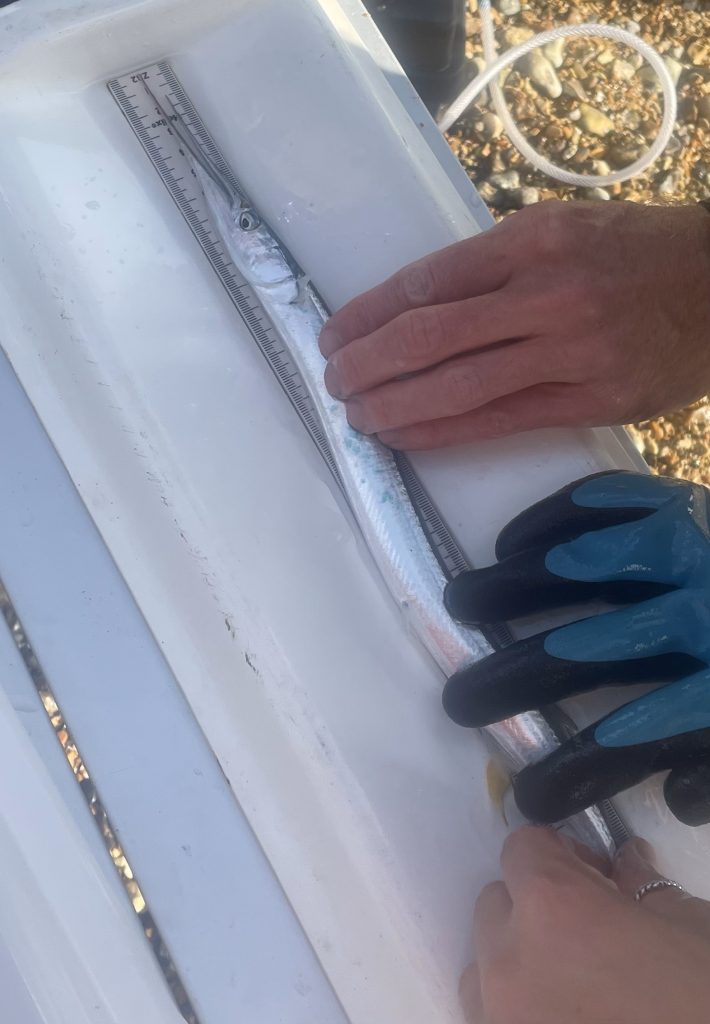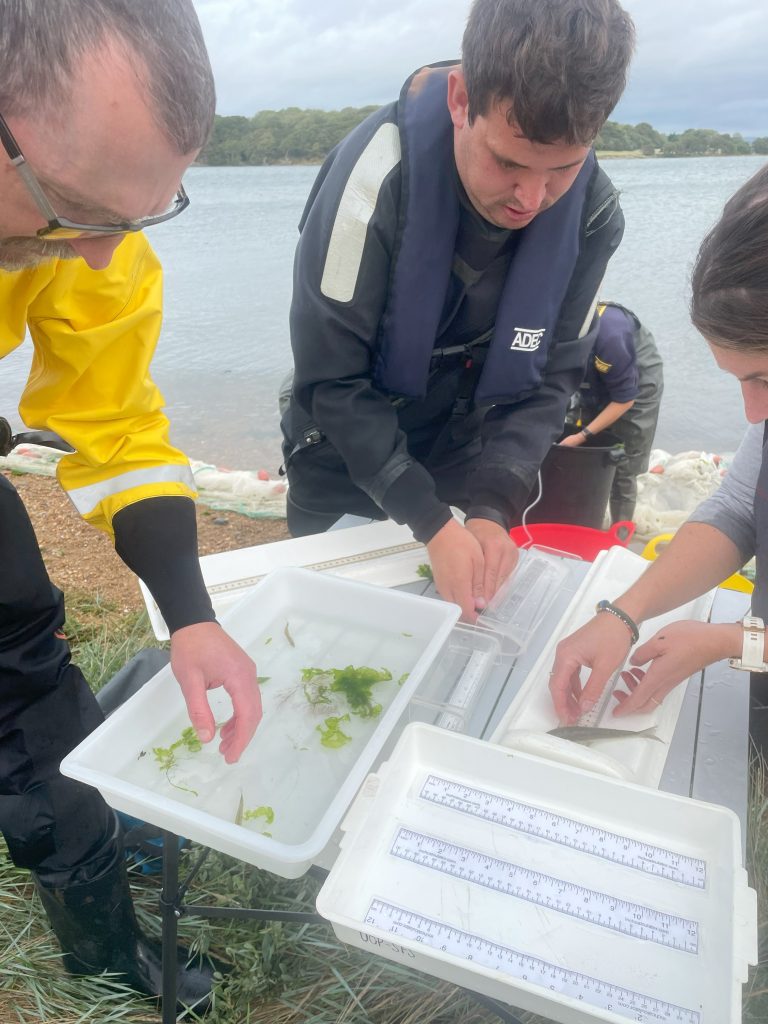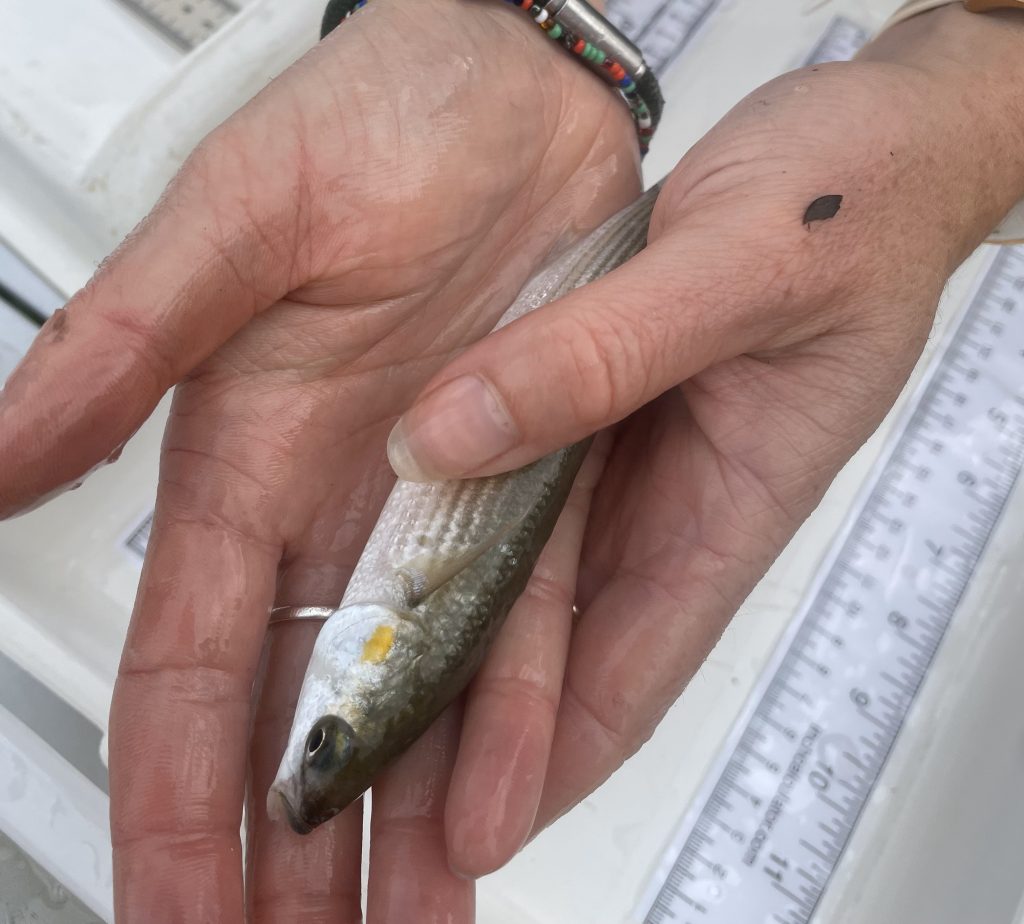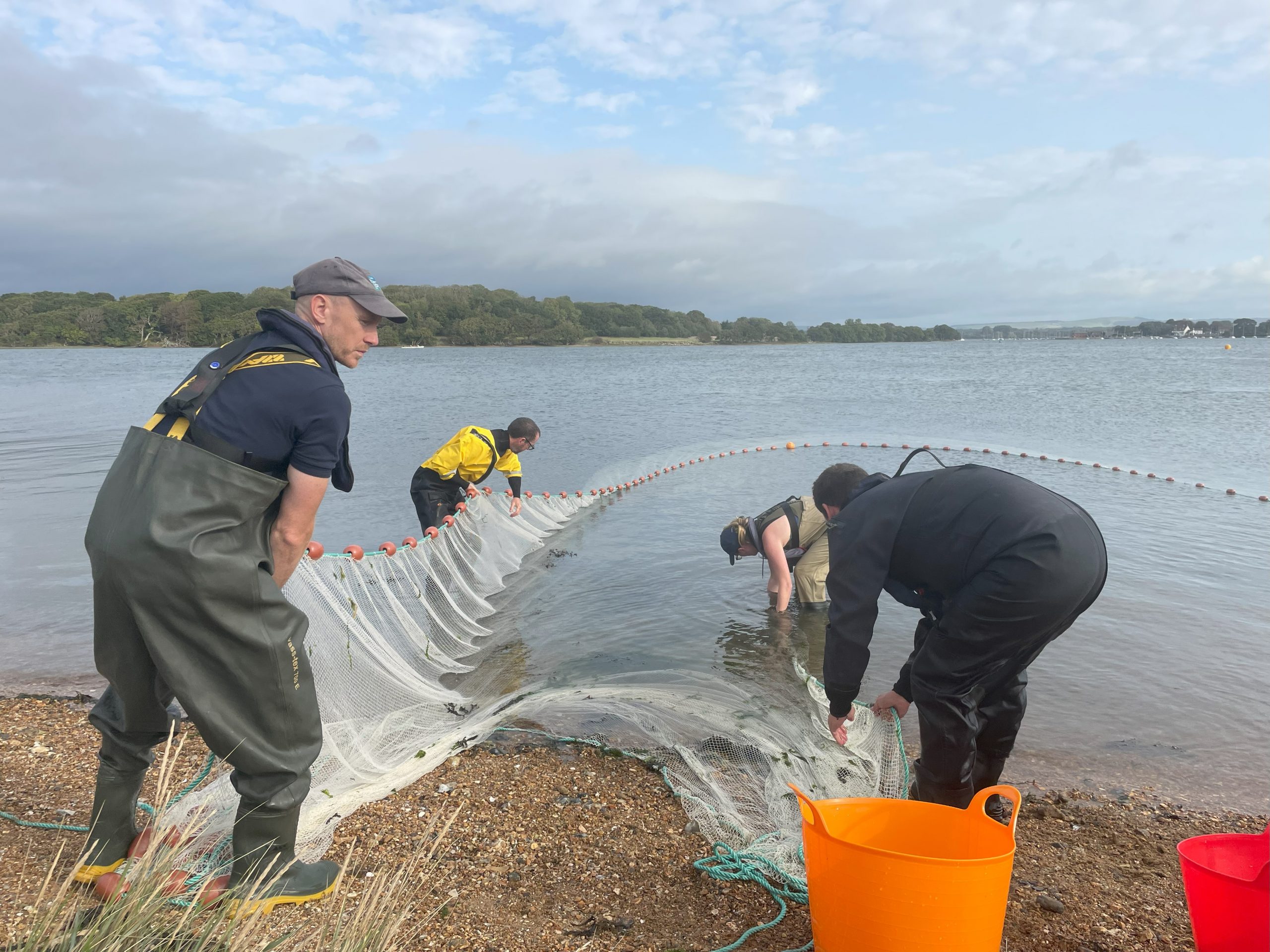Over the last few weeks, you may have spotted a team donned in waders and drysuits, waist-deep on the edge of Chichester Harbour, wrangling an enormous fishing net. What could they be doing?
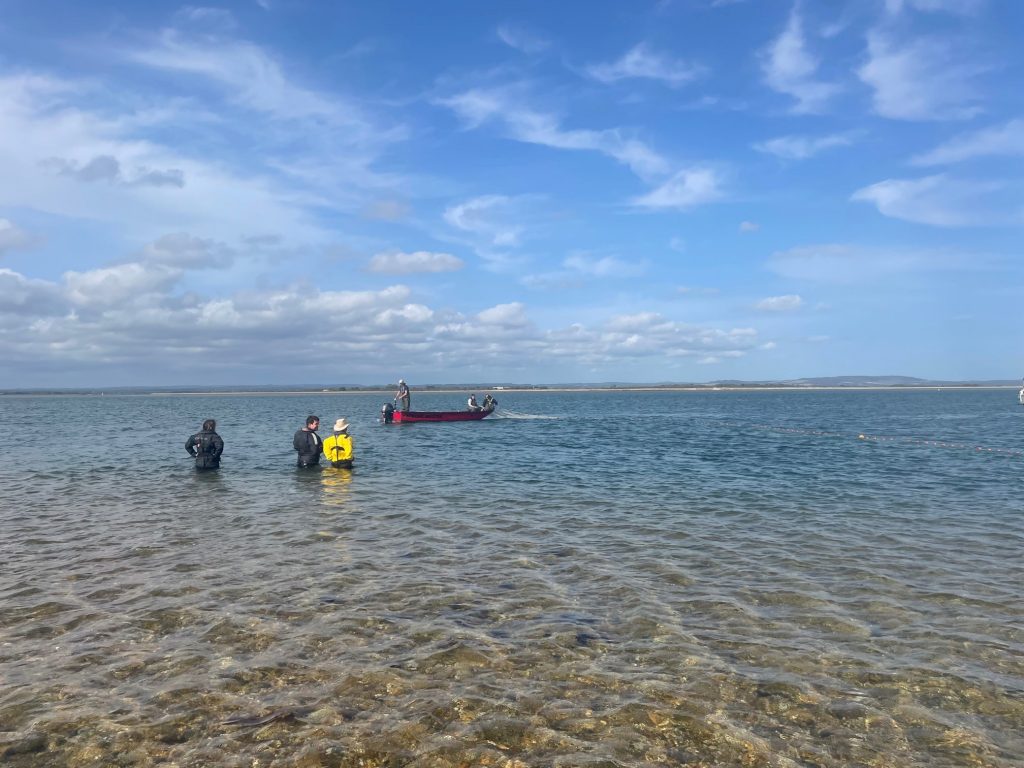
Every year, staff from Chichester Harbour Conservancy work with partners from Sussex Inshore Fisheries Conservation Authority (IFCA) and the Solent Seascape Project to survey the fish within the harbour. An important “nursery” for many young fish species, including sea bass, the sheltered streamlets of the harbour’s saltmarsh and mudflats provide a vital habitat for young fish to develop and grow before heading out into the open seas.
Why?
The surveys take place every year, at the beginning and end of the summer across four sites. They provide a snapshot of the health and diversity of fish species within the harbour, and form part of our monitoring with the Solent Seascape Project – a project aimed at Solent-wide marine and coastal restoration.
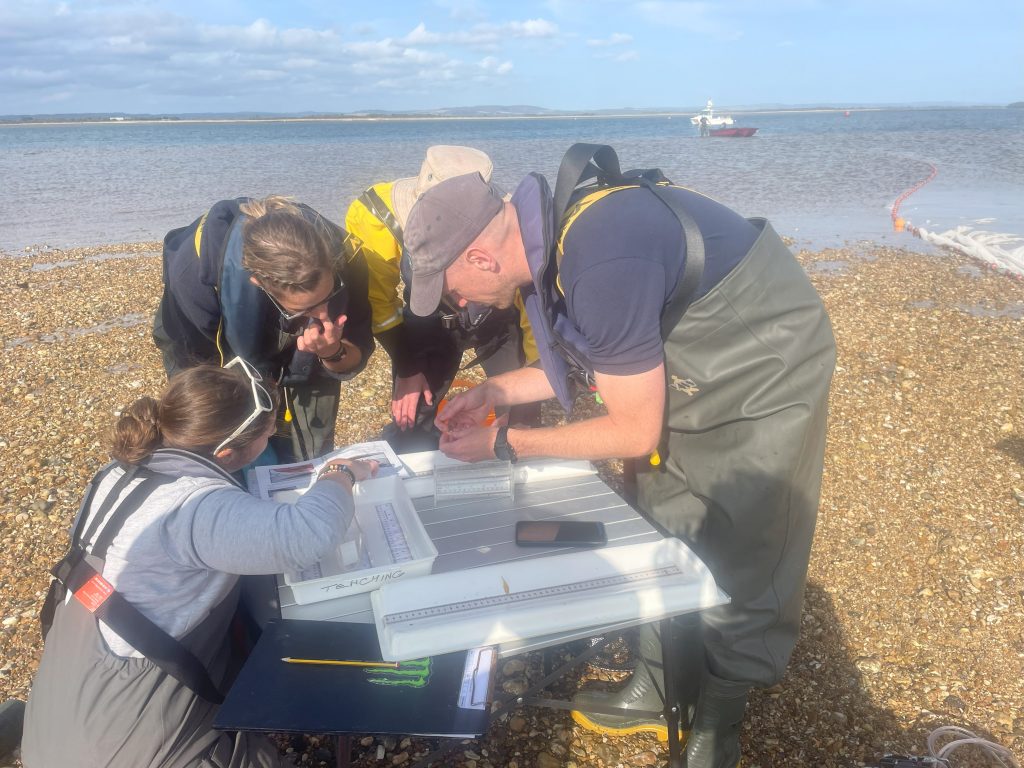
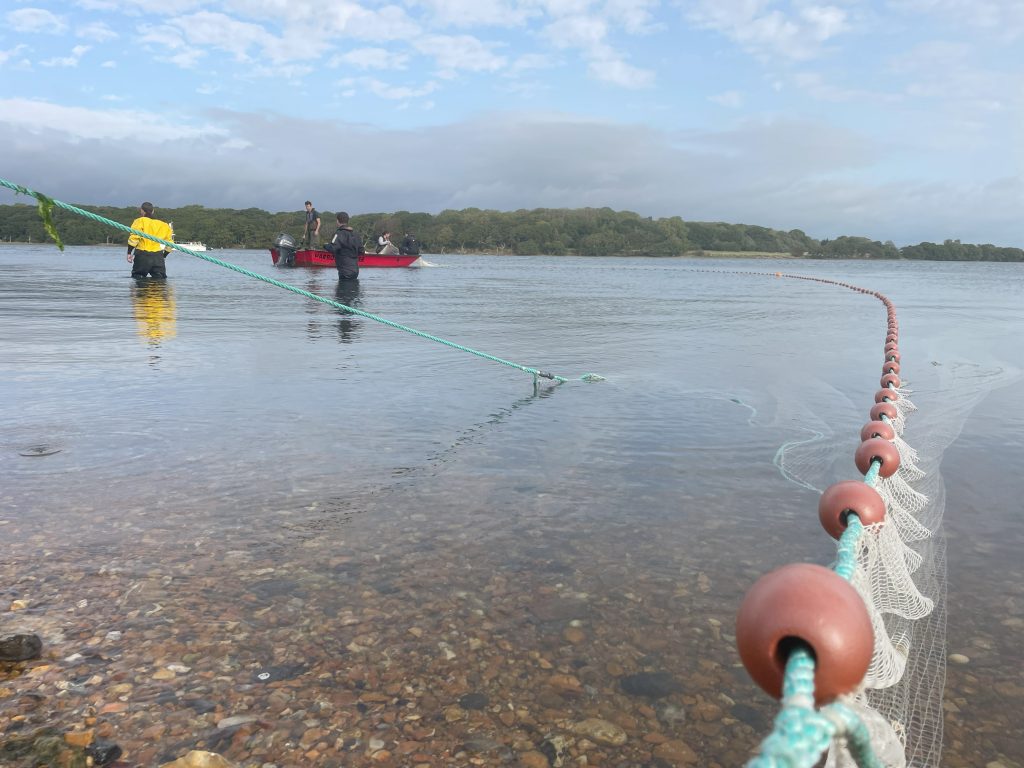
How?
First the team use a boat to fan out a 50m seine fishing net in a wide arc. This is pulled in carefully and the fish are decanted into oxygenated buckets of seawater – great care is taken to ensure they survive the surveys. The fish are then identified, counted and measured, before being released and swimming off into the harbour.
What did we find?
Sand smelts, juvenile sea bass and golden grey mullet were amongst the most common fish surveyed. But there were some surprises and exciting finds too, including a garfish – a long slender fish with an elongated beak-like jaw (a bit like a swordfish). A young cuttlefish was also surveyed; most people know these through the chalky bones that wash up on the shore, but these molluscs are fierce predators!
The data gained from the surveys is only a snapshot, but it is an important snapshot as we monitor the health of the harbour, and work on the protection and restoration of the marine habitats like saltmarsh and seagrass that small fish so depend upon.
